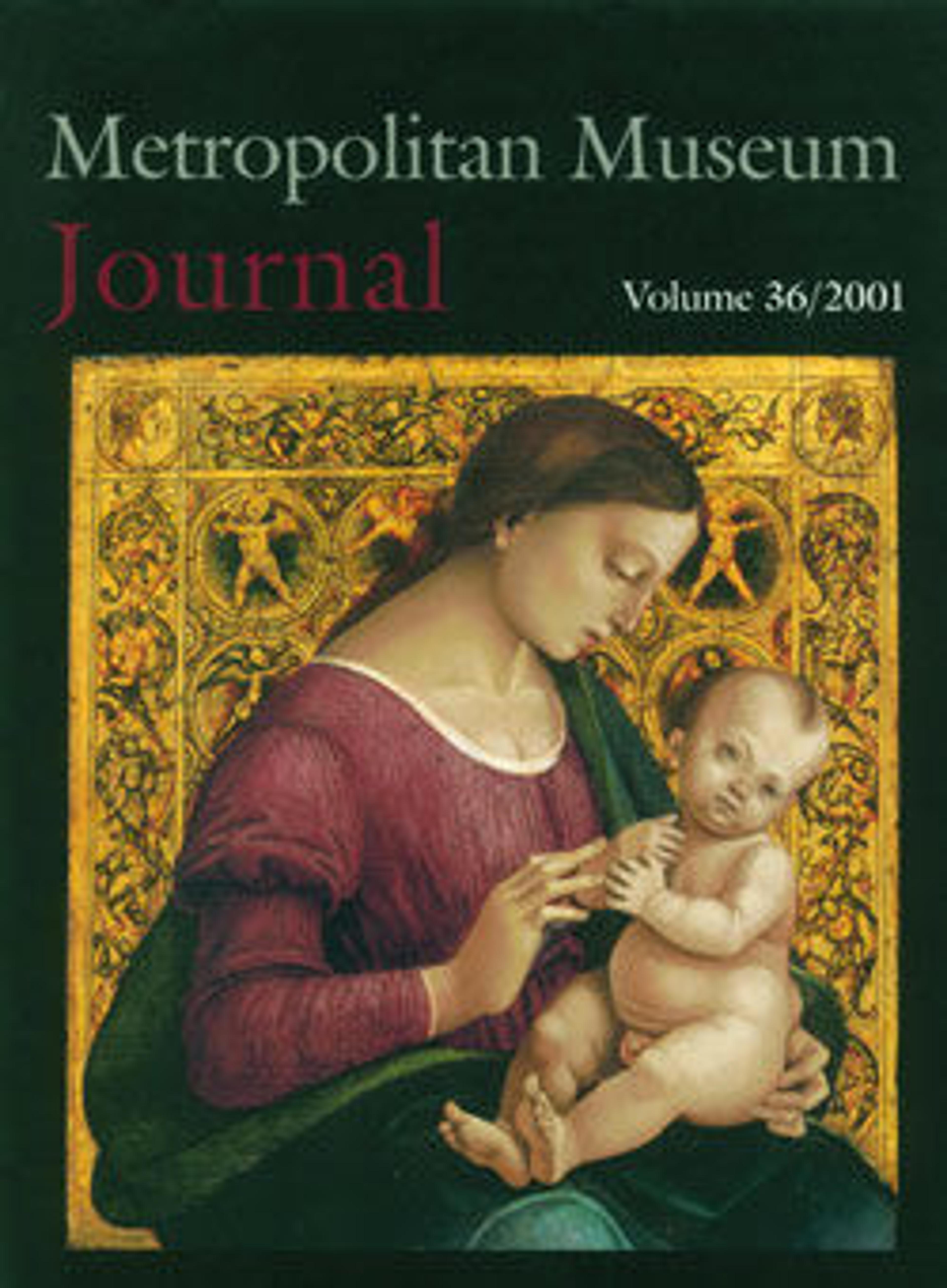Portrait of the imperial guard Zhanyinbao
Under the Manchu emperors of the Qing dynasty, portraiture again became an important court-sponsored art. This full-length depiction of an imperial bodyguard of the first rank is from a set of one hundred portraits of loyal officials and valiant warriors commissioned by the Qianlong emperor (r. 1736–95) that originally hung in the Hall of Imperial Brilliance (Ziguang Ge), the pavilion in the Forbidden City where the emperor received tribute offerings and entertained foreign emissaries.
The poem inscribed in both Chinese and Manchu above the painting lauds Zhanyinbao's valor in combating nomadic rebels in the desert wastes of Central Asia:
Barehanded he rode the giant whale,
Capturing Weinuo in battle.
The bandits' heads were strung together
The length of his long lance.
With both hands he held open the declaration of war
All the way to Balikun [in Sinjiang Province].
Without [even pausing] to comb his horse's mane,
He returned and reported to his commander.
The poem inscribed in both Chinese and Manchu above the painting lauds Zhanyinbao's valor in combating nomadic rebels in the desert wastes of Central Asia:
Barehanded he rode the giant whale,
Capturing Weinuo in battle.
The bandits' heads were strung together
The length of his long lance.
With both hands he held open the declaration of war
All the way to Balikun [in Sinjiang Province].
Without [even pausing] to comb his horse's mane,
He returned and reported to his commander.
Artwork Details
- 清 佚名 乾隆頭等侍衛占音保像 軸
- Title: Portrait of the imperial guard Zhanyinbao
- Artist: Unidentified artist Chinese, 18th century
- Period: Qing dynasty (1644–1911)
- Date: dated 1760
- Culture: China
- Medium: Hanging scroll; ink and color on silk
- Dimensions: Painting and inscription: 74 1/4 x 37 7/16 in. (188.6 x 95.1 cm)
Overall with mounting: 130 1/2 x 46 3/8 in. (331.5 x 117.8 cm)
Overall with knobs: 130 1/2 x 50 1/4 in. (331.5 x 127.6 cm) - Classification: Paintings
- Credit Line: Purchase, The Dillon Fund Gift, 1986
- Object Number: 1986.206
- Curatorial Department: Asian Art
Audio
7655. Portrait of the Imperial Bodyguard Zhanyinbao
0:00
0:00
We're sorry, the transcript for this audio track is not available at this time. Please email info@metmuseum.org to request a transcript for this track.
More Artwork
Research Resources
The Met provides unparalleled resources for research and welcomes an international community of students and scholars. The Met's Open Access API is where creators and researchers can connect to the The Met collection. Open Access data and public domain images are available for unrestricted commercial and noncommercial use without permission or fee.
To request images under copyright and other restrictions, please use this Image Request form.
Feedback
We continue to research and examine historical and cultural context for objects in The Met collection. If you have comments or questions about this object record, please complete and submit this form. The Museum looks forward to receiving your comments.
